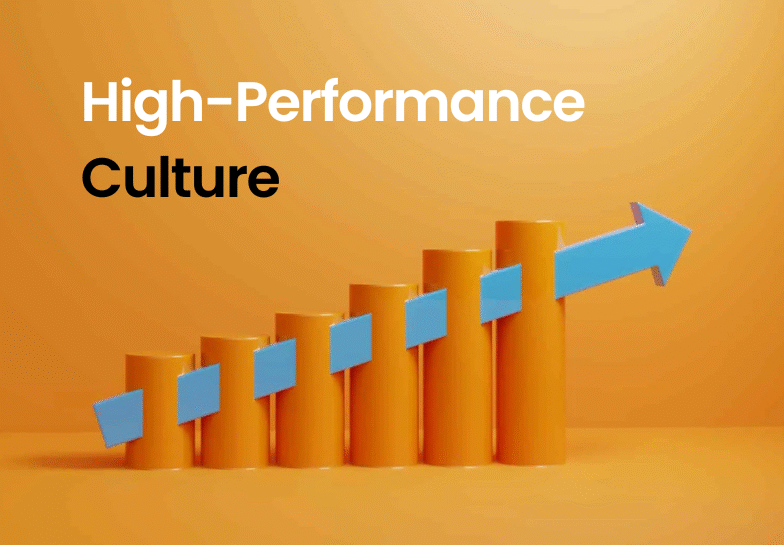The Science Behind High-Performance Culture and How to Build It

In the current fast-paced and challenging business world, cultivating a high-achieving culture is essential, not optional. Though it might seem like a trendy term, there’s solid research backing the creation, maintenance, and use of such cultures to drive advancement. It goes beyond mere benefits and rules, arising from deliberate leadership, shared values, and constant focus on both outcomes and the workforce. This blog delves into the science of high-performance culture and provides practical advice on establishing it, specifically in the setting of workplace culture changes and improving team performance.
What Is a High-Performance Culture?
A high-performance culture describes a workplace where staff are in sync with the company’s objectives, driven to excel, and always aiming for advancement. It’s established through shared principles, transparent dialogue, collective responsibility, and a dedication to quality. This type of culture gives power to individuals and groups, improving involvement, output, and creativity.
The Psychology of Performance
Workplace actions are influenced by psychological security, drive, and feeling of significance. Studies in organizational psychology indicate that employees often perform better if they feel safe to take chances, share thoughts, and acknowledge errors without being criticized. This confidence is the first essential element of a highly productive work environment.
Internal drive – the desire to do worthwhile work – is another crucial element. When employees embrace the mission and values of their organization, their output increases. Because of this, connecting personal purpose with company objectives is crucial for any successful shift in workplace culture.
The Neuroscience of Engagement
Engaged employees show greater cognitive and emotional investment in their work. Neuroscience tells us that when people are recognized, empowered, and given opportunities to grow, their brains release dopamine and oxytocin—chemicals associated with pleasure, connection, and trust. These positive reinforcements create a feedback loop of motivation and performance.
On the flip side, toxic environments with micromanagement and lack of clarity activate the brain’s threat response, reducing creativity and decision-making ability. Therefore, fostering a psychologically safe and encouraging atmosphere is both a scientific and strategic move.
Leadership’s Role in Cultural Transformation
A culture mirrors its leadership. When leaders demonstrate transparency, humility, and perseverance, they’re more apt to inspire those same traits in their teams. Effective leaders behave like coaches—not simply managers—offering regular feedback, fostering learning, and acknowledging achievements.
To successfully cultivate a new workplace culture transformation alignment is vital. Leaders must not only establish the values and standards of the culture, but also exemplify them through their day-to-day conduct. Culture isn’t just words on display; it’s what leaders do habitually.
Building Blocks of a High-Performance Culture
Here’s how organizations can intentionally build and nurture a high-performance culture:
1. Define and Communicate Core Values
Your organization’s values should guide behavior, decision-making, and collaboration. Make them visible and revisit them often—not just during onboarding.
2. Hire for Cultural Fit and Potential
Recruit people who resonate with your mission and values. Skills can be taught, but mindset and alignment often determine long-term success.
3. Create Clear Accountability Structures
High-performance doesn’t mean micromanagement. It means setting clear expectations and providing employees with the tools, freedom, and ownership to meet them.
4. Recognize and Reward Excellence
Frequent, meaningful recognition—whether through bonuses, shout-outs, or promotions—drives behavior. Make recognition a consistent part of your culture.
5. Invest in Continuous Learning
High-performance cultures are learning cultures. Offer training, mentorship, and growth pathways to ensure your teams evolve with your business.
6. Encourage Collaboration Over Competition
Healthy competition can drive results, but collaborative cultures foster innovation. Facilitate cross-functional teamwork and knowledge sharing.
Measuring Culture and Performance
You can’t improve what you don’t measure. Use both qualitative and quantitative tools to evaluate culture and performance regularly:
- Employee Engagement Surveys: Gauge morale, satisfaction, and alignment with values.
- 360-Degree Feedback: Gain insights into how employees view each other and their leaders.
- Performance Metrics: Track productivity, quality of work, and goal attainment.
These metrics not only highlight gaps but also guide your ongoing efforts toward team performance improvement.
Examples of High-Performance Cultures
Companies like Google, Netflix, and Salesforce are often cited for their thriving cultures. These organizations prioritize autonomy, innovation, and employee well-being while maintaining high standards and clear expectations.
For instance, Netflix’s “freedom and responsibility” philosophy has become a benchmark in creating cultures where employees are trusted to act in the company’s best interest without rigid oversight.
Challenges in Building a High-Performance Culture
Creating this kind of culture comes with its hurdles. Opposition to new things, vague values, inconsistent management, or a lack of personal responsibility can hinder progress. That’s why altering a workplace culture transformation demands thoughtful planning, solid backing from those in charge, and frequent evaluations to remain on track.
Final Thoughts: A Culture That Performs
High-performance culture doesn’t happen by chance—it’s engineered by design. Backed by science and reinforced by daily habits, such cultures empower individuals and elevate entire organizations. Whether you’re a startup or an enterprise, prioritizing team performance improvement and cultural alignment will be your competitive edge.
When people thrive, business thrives. And that’s the ultimate science behind high performance.










